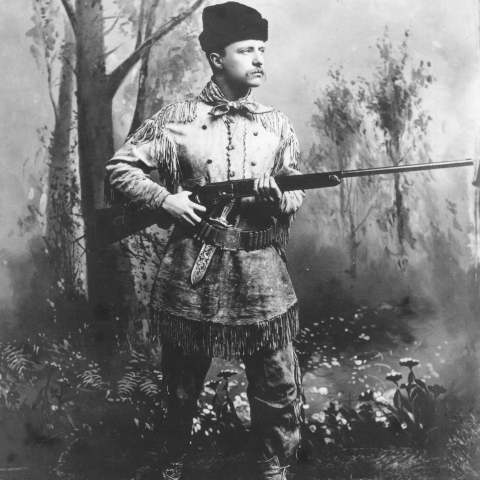
About Theodore Roosevelt (1858-1919) The Conservation President
During his very active presidency, Theodore Roosevelt established approximately 230 million acres of public lands between 1901 and 1909, including 150 national forests, the first 55 federal bird reservation and game preserves, 5 national parks, and the first 18 national monuments. In 1905, Roosevelt created the U.S. Forest Service with Gifford Pinchot as its first Chief Forester. Pinchot’s acute eye for habitat helped add critical forests and wilderness areas.
An avid ornithologist, Roosevelt began an ongoing experiment to carve out habitat for his beloved wildlife by creating what would become the National Wildlife Refuge System on March 14, 1903. This early experiment included Pelican Island, Florida, to protect a critical rookery for endangered pelicans; Breton Island, Louisiana, the only refuge that it’s thought Roosevelt visited after his retirement; and National Bison Range, Montana, perhaps our nation’s first attempt at wildlife restoration. Roosevelt’s experiment began with the four-acre Pelican Island Bird Reservation and has since expanded to more than 560 refuges and monuments protecting 850 million acres of lands and waters.
Roosevelt and his most trusted advisor, Pinchot, sought a new term for a new era of environmental action in the early 20th century. They settled on “conservation,” and its popularization is one of his most important legacies. In 1907, Roosevelt declared: “The conservation of natural resources is the fundamental problem. Unless we solve that problem it will avail us little to solve all others.”